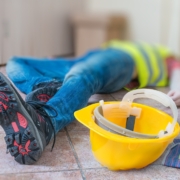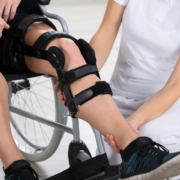Dog Bites in Alabama: What Are the Most Dangerous Dog Breeds?
In recent decades, researchers have studied the underlying causes behind aggressive or even deadly interactions between human beings and dogs, and whether certain dog breeds are more prone to attacking humans.
The Centers for Disease Control and Prevention conducted a study in the mid-1990s regarding dog breeds that caused fatal attacks in the United States between 1979 and 1996. The Pit Bull was identified as being involved in 60 fatal attacks, Rottweiler was responsible for 29, and German Shepherds had 19 attacks.
Dog attacks make headlines on a regular basis even today. As per a national victims’ group, the canine breeds responsible for these attacks largely remain the same. These are the top dog breeds identified by DogsBite.org after compiling a 13-year fatality report involving attacks between 2005 and 2017.
Most Dangerous Dog Breeds
Pit Bull
Pit Bull attacks account for the most deaths in the United States. This breed is also responsible for the highest percentage of unprovoked attacks. Pit Bulls were responsible for 64% dog-bite related fatalities last year in the United States.
Rottweiler
Rottweilers are a close second when it comes to fatal and unprovoked attacks. The bite of this breed is extremely powerful. In fact, it measures 1,180 to 1,460 newtons on the force scale. Rottweilers were the top cause (almost 50%) behind deaths between 1993 and 1996 as per the CDC study.
German Shepherd
German Shepherds are beautiful dogs with a bite force of 1,060 newtons. This is enough to easily break your shin bone in two. There have been studies that found that this dog is also responsible for attacking smaller breeds.
Doberman Pinscher
The sheer strength and size of Doberman Pinschers make them a dangerous dog breed. The last reported Doberman-caused death in the United States was in 2011. This was when a Doberman Pinscher attacked and killed an elderly woman. She was the dog’s owner.
Bullmastiff
These large and intimidating dogs can easily weigh as much as 130 pounds. The Bullmastiff was responsible for the death of a Texas teenage boy. The boy was protecting another young girl that was being attacked and dragged by the canine.
Husky
Huskies are energetic and athletic dogs. They are also a current Instagram favorite. However, these are working dogs – not social ones. Siberian Huskies caused 15 deaths in the United States between 1979 and 1998.
Malamute
Malamutes are often known to attack other smaller breeds and animals. They caused 5 fatal dog bites between the years 1966 and 1980.
Wolf Hybrid
These are dogs that are the result of direct crossbreeding with wolves. Although all dogs are descendants of wolves, the bloodline has been diluted to a less aggressive degree in most dog breeds.
Wolf hybrids are unpredictable and skittish. In fact, it is illegal to own a wolf hybrid in most states. This dog breed was responsible for 14 deaths in the United States between 1979 and 1998 as per the CDC.
Boxers
Boxers are descendants of hunting dogs. They have powerful bites and strong jaws. They are a highly protective breed. This can be a good thing if you want a guard dog, but it also means that the breed has the propensity to be highly dangerous. The last known fatality caused by Boxers in the United States occurred in 2013.
Great Dane
Great Danes are the giants of dogs, often known as gentle giants. However, they can be very dangerous. Full-grown male Danes can easily weigh 200 pounds. In 2003, a Great Dane was responsible for killing a 2-year-old girl in the US.
Dog Bites are not just Painful but also Expensive
An estimated 1,000 people need emergency care in the United States each day because of dog bite injuries. These injuries, in some tragic cases, result in the death of the victim. There were 42 dog-bite-related deaths in the US in 2014. 20 of these deaths occurred in children while 16 were in individuals older than 50.
Most of the dog’s individual aggressiveness is determined by how it has been trained by its owner. But that said, there are certain dog breeds that are simply more aggressive and dangerous as compared to others. This is usually because of their massive strength and size. Since 2003, the average claim for dog attacks has increased by 90%.
This is driven by higher settlements and increasing medical costs. Injuries inflicted by canines accounted for more than 35% of homeowners’ liability in 2017. This was to the tune of nearly $700 million.
Dog attacks required 28,000 people to undergo reconstructive surgery in 2015. The cost of a dog-injury-related hospital stay is estimated to be $18,200. This is without rehabilitative care and lost wages.
Committed Dog Bite Attorneys in Alabama are Ready to Fight for You
The premises liability attorneys at M. Adam Jones & Associates have helped many victims obtain the compensation they deserve following a dog injury. We understand how to deal with animal attack cases and will help you take the right steps to maximize recovery.
Contact us today to schedule a free, no-obligation consultation with a member of our legal team.
- Adam Jones,
Managing Partner
- Adam Jones & Associates, LLC
206 N. Lena St.
Dothan, AL 36303
Tel: 334-699-5599
Fax: 334-699-5588



